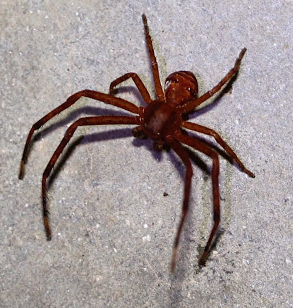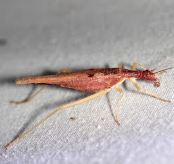

Lemon Plagodis
This morning I found three Lemon Plagodis and an Oak Besma perched on a Velcro strap that holds my moth sheet tight. Enjoy!

Cecropia
Hyalophora Cecropia isn't a moth that I expected to see at my moth light here in the mountains. I had a brief glimpse of one in Lake Waccamaw State Park in North Carolina fourteen years ago today (5/20/14). The only time I had one to examine up close and personal, I was a kid on the family farm in Delaware, 60+ years ago. Cecropias are the largest of our North American silkmoths and they are spectacular in their own right. Enjoy the pics!

Calico Pennant
Last Wednesday (5?14/14) my wife and I found a number of active dragonflies at Bass Lake on the outskirts of Blowing Rock, Watauga County, NC. We saw eastern pondhawks, common whitetails, Carolina saddlebags, and Calico pennants. The pennants sat still long enough for me to get a decent photo. Enjoy!


Ailanthus
In my neck of the woods, Ailanthus is an invasive alien that looks like a native, but isn't. One of the reasons that homeowners like it is the flowers. Moth enthusiasts know about it because Atteva aurea, the Ailanthus webworm, uses it as its host plant. Here's the photographic evidence.

Artichoke Plume Moth
The plume moths, Pterophoridae, include many species that can't be identified either in the field or from photos. Fortunately there are a few exceptions in our area. This moth is maybe an inch from wingtip to wingtip. Its name, Platyptilia carduidactylus, is longer than its wingspan. Its English name, Artichoke Plume Moth, indicates one of tis host plants, but the caterpillars also utilize thistles, much more common than the garden vegetable in my neck of the woods.

Hydriomena Something or Other
After I posted the message about digital photographs and IDs, I realized that I had erred because no one other than a dedicated moth-er would know what the genus Hydriomena is.


When a digital photo really helps
Identifying insects (and other critters) is a reasonable method most of the time, but sometimes is impossible. An example is the Geometer moth genus Hydriomena. There are probably several species in our area, but the color and patterns on the wings are highly variable and cannot be used safely to distinguish species.

Plethodon complex salamander
Yesterday, March 12, I photographed a salamander in the yard. After I did an initial search for an ID, I sent the photos to Bill Dunson. He forwarded them to a couple of experts and recommended that I send the pics to the president of the Virginia Herpetological Society, which I did.

Snow and Birds on March 7
Today, March 7, was a good day to stay inside, enjoy the falling snow, and watch the birds. The first unexpected arrivals were red-winged blackbirds, three of them—a female and two first-winter males. The first photo shows the female.

Fox Squirrel
The fox squirrel that first appeared in the yard on December 12 continues to return periodically. This morning, Christmas Eve, it came to the pole feeder in front of the study window, enabling me to take a photo in spite of the cloudy weather.


Caterpillars and Pupae
Now that the weather has turned hostile to insects and other arthropods, it's time to empty my folder of stuff to post. I collected a number of caterpillars this fall and have a box of moist potting soil that has the resulting pupae. Some I identified and some not. Here's one that I couldn't decipher.

September sightings
I had several interesting visitors to my moth sheet and porch during September. The first was an American Toad that was obviously looking for a meal.

What moths do at night
Because we see moths at lights or resting quietly somewhere during the day, it's easy to forget that many of them sip nectar just like their butterfly cousins. Here are two that visited my butterfly bushes on August 31.

Orange-striped Oakworms
This is the wandering season for oakworms. They come down from the trees and look, sometimes at considerable distances from the trees, for places to pupate in the ground. My wife found one and later I found two more on the back porch. Here's the caterpillar.
